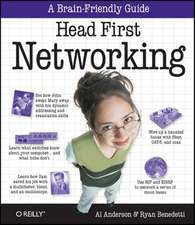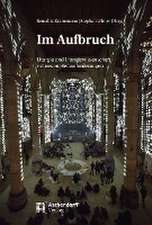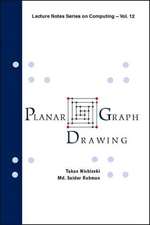Landmarks: GIScience for Intelligent Services
Autor Kai-Florian Richter, Stephan Winteren Limba Engleză Hardback – 12 mai 2014
| Toate formatele și edițiile | Preț | Express |
|---|---|---|
| Paperback (1) | 642.65 lei 6-8 săpt. | |
| Springer International Publishing – 3 sep 2016 | 642.65 lei 6-8 săpt. | |
| Hardback (1) | 648.95 lei 6-8 săpt. | |
| Springer International Publishing – 12 mai 2014 | 648.95 lei 6-8 săpt. |
Preț: 648.95 lei
Preț vechi: 811.19 lei
-20% Nou
Puncte Express: 973
Preț estimativ în valută:
124.19€ • 134.85$ • 104.32£
124.19€ • 134.85$ • 104.32£
Carte tipărită la comandă
Livrare economică 22 aprilie-06 mai
Preluare comenzi: 021 569.72.76
Specificații
ISBN-13: 9783319057316
ISBN-10: 3319057316
Pagini: 223
Ilustrații: XV, 223 p. 47 illus.
Dimensiuni: 155 x 235 x 20 mm
Greutate: 0.51 kg
Ediția:2014
Editura: Springer International Publishing
Colecția Springer
Locul publicării:Cham, Switzerland
ISBN-10: 3319057316
Pagini: 223
Ilustrații: XV, 223 p. 47 illus.
Dimensiuni: 155 x 235 x 20 mm
Greutate: 0.51 kg
Ediția:2014
Editura: Springer International Publishing
Colecția Springer
Locul publicării:Cham, Switzerland
Public țintă
GraduateCuprins
Introduction: What landmarks are, and why they are important.- Landmarks: A thought experiment.- Cognitive aspects: How people perceive, memorize, think and talk about landmarks.- Conceptual aspects: How landmarks can be described in data models.- Computational aspects: How landmarks can be observed, stored, and analysed.- Communication aspects: How landmarks enrich the communication between human and machine.- Conclusions: What is known and what is still challenging about landmarks.
Recenzii
“This book focuses on how landmarks can be (or should be) used on an intelligent navigation system … . recommended to cognitive and behavioral scientists who are interested in the practice of navigation assistance and computer scientists interested in the theoretical research into human spatial cognition. Each chapter is provided with a good reference list, which helps graduate students to continue further research on wayfinding and navigation. The book’s thoughtful discussions open the door to future research questions as well.” (Toru Ishikawa, Künstliche Intelligenz, Vol. 31, 2017)
“It is a timely, well-researched, and well-written review of perceptual, cognitive, and computational modeling perspectives on the question of landmarks in the urban environment. … Researchers and graduate students in the computer and geographical sciences will find this an interesting and informative review of research and concepts in its scope. … This book is a very readable and instructive resource for those interested in geospatial representation and reasoning and related subjects, especially in urban settings.” (R. M. Malyankar, Computing Reviews, December, 2014)
“It is a timely, well-researched, and well-written review of perceptual, cognitive, and computational modeling perspectives on the question of landmarks in the urban environment. … Researchers and graduate students in the computer and geographical sciences will find this an interesting and informative review of research and concepts in its scope. … This book is a very readable and instructive resource for those interested in geospatial representation and reasoning and related subjects, especially in urban settings.” (R. M. Malyankar, Computing Reviews, December, 2014)
Caracteristici
Summarizes the latest studies on car navigation services, mobile location-based services, museum guides, tourist guides, public transport planners and recent voice interfaces to mobile devices Broadens understanding of spatial applications for smart phones Contains numerous exercises and examples to reinforce concepts Includes supplementary material: sn.pub/extras













